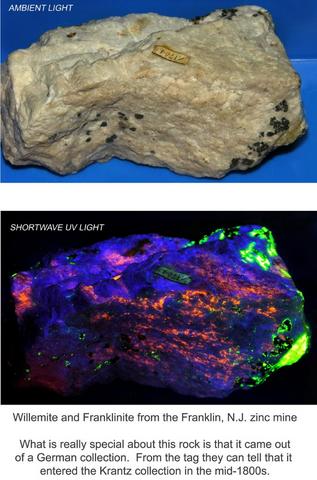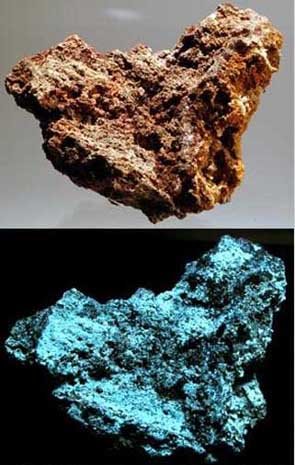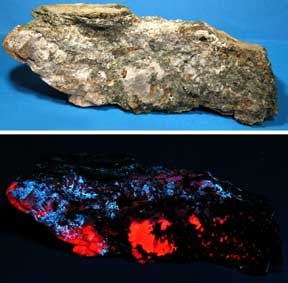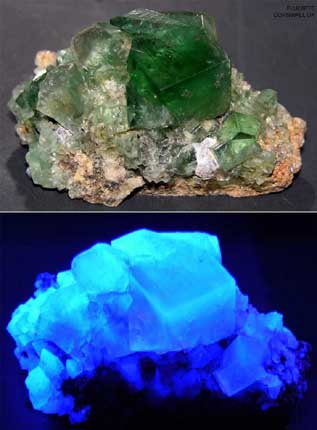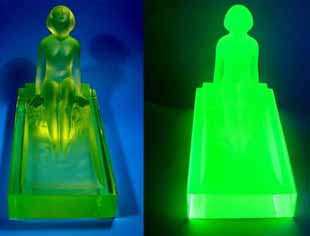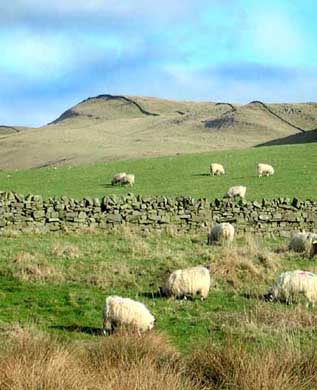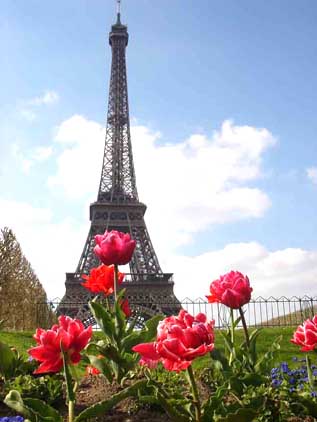Turquoise
-
This is copied from the December newsletter of the Deming Gem & Mineral Society:
-
December’s Birthstone. . .Turquoise
-
There's something special about this sky-blue gem. The American Indians mined thin turquoise veins and believed the stone brought together the spirits of sea and sky to bless 
Turquoise was used for beads by the Egyptians also, as well as for inlay in gold, as early as 5500 B.C. The oldest dated piece of jewelry is said to be an Egyptian bracelet set with turquoise from the oldest source of turquoise, the Maghara Wadi mines in the Sinai Peninsula.
The highest grade of turquoise has for centuries come from the Persian mines near Nishapur, in the Iranian province of Khorosan. The Persians have regarded turquoise as their national gem. The stone occurs in irregular patches and narrow seams in a brecciated trachyte porphry associated with limonite.
“White Buffalo” Turquoise: When discovered in the Dry Creek Mine on the Shosone Indian
Reservation near Battle Mountain, Nevada, in 1993, they were not sure what it was. Because of its hardness, it was decided to send it to have it assayed and their suspicions proved correct; it was in fact white turquoise. It was not until 1996, however, that it was finally made into jewelry.
Turquoise gets its color from the heavy metals in the ground where it forms. Blue turquoise forms where there is copper present, which is the case with most Arizona turquoises. Green turquoise forms where iron is present; the case with most Nevada turquoises. White turquoise forms where there are no heavy metals present, which turns out to be a very rare occurrence. To 
Because white turquoise is as rare as a white buffalo, the Indians call it "White Buffalo" turquoise.
Odontolite - Tooth Stone or Bone Turquoise is actually the bones and teeth of animals, fossilized and colored blue orgreen by iron phosphate.
-
-
-
-




